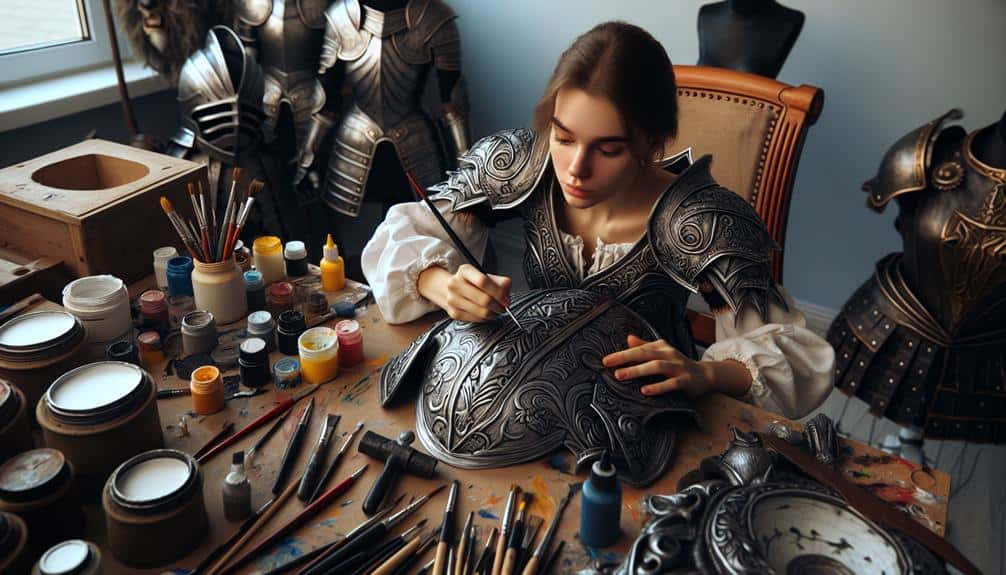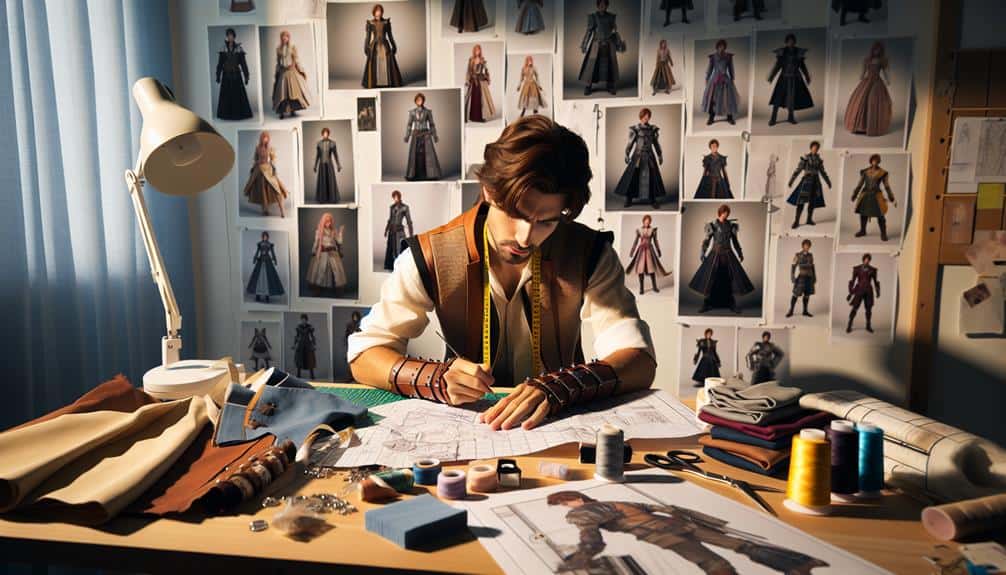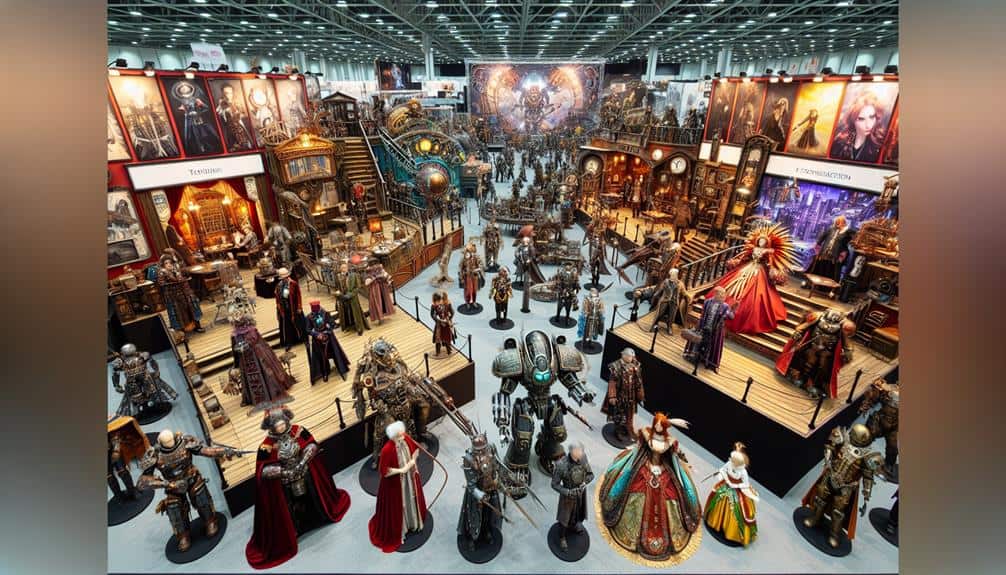When it comes to excelling in the domain of cosplay competitions, understanding the intricacies of crafting armor can be a game-changer.
The key lies in honing your skills and techniques to make sure your armor stands out amongst the competition. By focusing on meticulous material selection, precise construction methods, and a keen eye for detail, you can elevate your cosplay to new heights.
But what truly sets apart the champions in this arena?
Key Takeaways
- Choose materials wisely for character accuracy and durability.
- Focus on precise shaping, connections, and reinforcement.
- Incorporate advanced painting techniques for a professional finish.
- Pay attention to weathering, paint application, and finishing details.
Choosing the Right Materials
Have you ever wondered which materials are the best for creating durable and realistic cosplay armor pieces? When it comes to cosplay armor, choosing between foam and metal is an important decision that can greatly impact the final outcome of your costume. Foam is a popular choice among cosplayers due to its lightweight nature, ease of shaping, and affordability. On the other hand, metal provides a level of authenticity and durability that foam may not match. Consider the character you're portraying and the level of detail you aim to achieve when deciding between these two materials.
Once you have chosen your base material, mastering painting techniques is essential to bring your cosplay armor to life. Techniques such as dry brushing, weathering, and airbrushing can add depth and realism to your armor pieces. Experimenting with different paints, textures, and finishes can help you achieve a professional-looking result that will truly make your cosplay stand out. Remember, the devil is in the details when it comes to cosplay armor, so take your time to perfect your painting techniques for a truly impressive final product.
Precision in Construction Techniques
Crafting precise cosplay armor requires meticulous attention to detail in your construction techniques to secure a professional and polished final product. To achieve this level of precision, consider the following:
- Proper Shaping: Begin by ensuring your armor pieces are accurately shaped according to the design you're replicating. Use heat guns or thermoplastics to mold the material to the correct form, paying close attention to curves, angles, and dimensions.
- Flawless Connections: Seamlessly join different pieces of armor together to create a cohesive and realistic look. Whether using glue, rivets, or sewing techniques, make sure the connections are sturdy and visually seamless. Any gaps or misalignments can detract from the overall quality of your armor.
- Detail-Oriented Trimming: Pay close attention to trimming excess material or rough edges to maintain clean lines and a professional finish. Use sharp tools like utility knives or Dremel tools to achieve smooth edges and precise cuts.
- Reinforcement Techniques: Strengthen weak points or areas that may undergo stress during wear by incorporating reinforcement methods such as additional layers of material, strategic stitching, or internal support structures. This will enhance the durability of your cosplay armor while maintaining its aesthetic appeal.
Attention to Detail and Finishing Touches
For a cosplay armor ensemble that truly stands out, meticulous attention to detail and flawless finishing touches are essential. When it comes to attention to detail, incorporating weathering techniques can elevate your armor to the next level. Weathering techniques involve adding realistic wear and tear to your armor, such as scratches, rust, or dirt, to give it an authentic and battle-worn look. This attention to detail will make your armor appear more important and immersive, capturing the essence of the character you're portraying.
Additionally, perfecting your paint application is important for achieving a polished finish. Make sure your paint job is smooth, even, and accurately matches the colors of the original design. Take your time to carefully paint each section of the armor, paying close attention to details like gradients, shadows, and highlights. A well-executed paint job can make all the difference, transforming your cosplay armor into a work of art that's sure to impress judges and fellow cosplayers alike.
Frequently Asked Questions
How Can I Incorporate Special Effects or Lighting Into My Cosplay Armor for Competitions?
Want to make your cosplay armor stand out at competitions? Special effects like LED lighting, weathering effects, and battle damage techniques can elevate your armor. Incorporate these elements creatively to wow the judges!
Are There Any Specific Rules or Guidelines to Follow When It Comes to Wearing or Displaying Cosplay Armor at Competitions?
When it comes to wearing or displaying cosplay armor at competitions, make sure to check the rules on armor materials and sizing. Judges usually look for accuracy, craftsmanship, and how well the armor complements your overall cosplay.
What Are Some Creative Ways to Make My Cosplay Armor Stand Out From the Competition?
To make your cosplay armor stand out, consider custom paint jobs for a unique look. Add intricate detailing to showcase your skill and creativity. These elements can elevate your armor from the competition, leaving a lasting impression.
How Can I Ensure That My Cosplay Armor Is Comfortable to Wear for Long Periods of Time During Competitions?
To guarantee your cosplay armor is comfortable for long competitions, focus on padding for pressure points, lightweight materials, breathable design, and adjustable straps. Prioritize durability, style, and versatility while also considering maintenance and customization for best performance.
Are There Any Tips for Transporting and Storing Cosplay Armor to Keep It in Top Condition for Competitions?
When transporting your cosplay armor to competitions, make sure to handle it with care to maintain its top condition. Proper storage is important; consider using padded containers or hanging it up to prevent damage.



